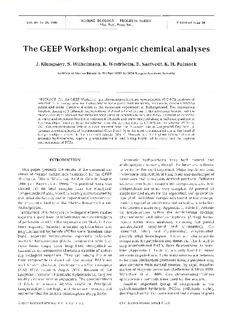| dc.description.abstract | For the GEEP Workshop, gas chromatographic/mass spectrometric (GUMS) analyses of
selected 2- to 5-ring aromatic hydrocarbons were performed for water, sediments, mussels Mytilus
edulis and crabs Carcinus maenas in the mesocosm experiment at Solbergstrand. The experiment
involved dosing of 3 different concentrations of diesel oil and copper to the mesocosm basins, and the
chemical analysis showed that elevated abundance of compounds from the diesel oil could be detected
in water and organisms but not in sediments. Mussels and crabs sampled along a pollution gradient in
Langesundfjord were analysed for selected aromatic hydrocarbons by GUMS and for selected PCBs by
GC. The concentrations formed a clear gradient from the 'cleanest' site in Langesund Bay (Site l),
through increasing levels of contamination (Sites 2 and 3), to the most contaminated site at the head of
Langesundfjord, closest to the industrial activity (Site 4). Mussels had the highest concentrations of
aromatic hydrocarbons, especially unsubstituted 4- and 5-ring PAHs, while crabs had the highest
concentrations of PCBs. | en |
